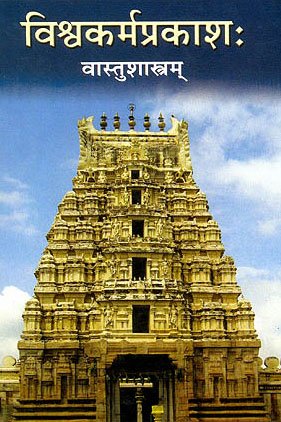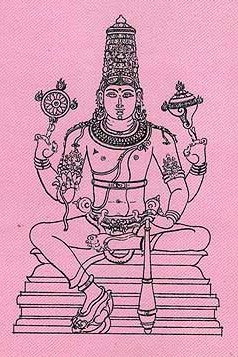Gurushishya, Guru-shishya, Guruśiṣya: 4 definitions
Introduction:
Gurushishya means something in Hinduism, Sanskrit. If you want to know the exact meaning, history, etymology or English translation of this term then check out the descriptions on this page. Add your comment or reference to a book if you want to contribute to this summary article.
The Sanskrit term Guruśiṣya can be transliterated into English as Gurusisya or Gurushishya, using the IAST transliteration scheme (?).
In Hinduism
Shaktism (Shakta philosophy)
Source: Google Books: ManthanabhairavatantramGuruśiṣya (गुरुशिष्य) refers to “master and disciple”, according to the second recension of the Yogakhaṇḍa of the Manthānabhairavatantra, a vast sprawling work that belongs to a corpus of Tantric texts concerned with the worship of the goddess Kubjikā.—Accordingly, as the Goddess (i.e., Kumārī) said to the God (i.e., Bhairava), “[...] Accomplishment is achieved in a special way by the transmission that takes place from master to disciple [i.e., guruśiṣya-krama]. You are my Lord, so how can you relate (to me as my) disciple? O Mahādeva, you are omniscient; how can you (assume the role of a) disciple? Bearing this in mind, tell me what would be best, and free of fear”.

Shakta (शाक्त, śākta) or Shaktism (śāktism) represents a tradition of Hinduism where the Goddess (Devi) is revered and worshipped. Shakta literature includes a range of scriptures, including various Agamas and Tantras, although its roots may be traced back to the Vedas.
Yoga (school of philosophy)
Source: ORA: Amanaska (king of all yogas): A Critical Edition and Annotated Translation by Jason BirchGuruśiṣya (गुरुशिष्य) refers to the “Guru and student”, according to the South-Indian recension of the Amanaska Yoga treatise dealing with meditation, absorption, yogic powers and liberation.—Accordingly, as Īśvara says to Vāmadeva: “[...] This is [called] Tāraka [yoga] because it causes the Guru and student (guruśiṣya) to cross over the ocean of existence. It is also called Tāraka because its [practice] depends on the flashing [light] of a star. Having obtained such a guru and having settled in a beautiful place, he who is free from all worry should practice only Yoga”.

Yoga is originally considered a branch of Hindu philosophy (astika), but both ancient and modern Yoga combine the physical, mental and spiritual. Yoga teaches various physical techniques also known as āsanas (postures), used for various purposes (eg., meditation, contemplation, relaxation).
Vastushastra (architecture)
Source: Google Books: Consecration Rituals In South AsiaGuruśiṣya (गुरुशिष्य) or Guruśiṣyaviśeṣaṇa refers to one of the chapters of the Devyāmata: an Early Śaiva Pratiṣṭhātantra dating back to the 5th century CE dealing with topics related to temple construction, consecration rituals, and iconography.—The Devyāmata is written in the form of a dialogue between Śiva and the Goddess. It begins with the praśnapaṭala, ‘the chapter on questions’, in which Devī tells Śiva what topics she would like to learn about. The answers are provided in the following chapters [e.g., guruśiṣya-viśeṣaṇa], of which each is dedicated to one specific subject.

Vastushastra (वास्तुशास्त्र, vāstuśāstra) refers to the ancient Indian science (shastra) of architecture (vastu), dealing with topics such architecture, sculpture, town-building, fort building and various other constructions. Vastu also deals with the philosophy of the architectural relation with the cosmic universe.
Pancaratra (worship of Nārāyaṇa)
Source: archive.org: Catalogue of Pancaratra Agama TextsGuruśiṣya (गुरुशिष्य) refers to the “preceptor and initiate”, as discussed in the eighth chapter of the Agastyasaṃhitā (agastya-suīkṣṇa-saṃvāda edition), an ancient Pāñcarātra Āgama text dealing with the worship of Rāma, Sītā, Lakṣmaṇa and Hanumān.—Cf. the chapter [guruśiṣyalakṣaṇa]: Sutīkṣṇa asks Agastya who was the first teacher of and the first initiate into the six-syllable mantra on this earth. [...]

Pancaratra (पाञ्चरात्र, pāñcarātra) represents a tradition of Hinduism where Narayana is revered and worshipped. Closeley related to Vaishnavism, the Pancaratra literature includes various Agamas and tantras incorporating many Vaishnava philosophies.
See also (Relevant definitions)
Partial matches: Shishya, Guru.
Starts with: Gurushishyakrama, Gurushishyakramanirupana, Gurushishyalakshana, Gurushishyasamvada, Gurushishyavisheshana.
Ends with: Shadgurushishya.
Full-text: Vedarthadipika, Gurushishyasamvada, Paribhava, Shishya, Kularnavatantra, Caranadasa, Shadgurushishya, Suktanukramani, Guru, Shivayogin, Pandita, Chandasshastra.
Relevant text
Search found 14 books and stories containing Gurushishya, Guru-shishya, Guru-sisya, Guru-śiṣya, Gurusisya, Guruśiṣya; (plurals include: Gurushishyas, shishyas, sisyas, śiṣyas, Gurusisyas, Guruśiṣyas). You can also click to the full overview containing English textual excerpts. Below are direct links for the most relevant articles:
Samkhya thoughts in the Mahabharata (by Shini M.V.)
Four Tattvas of Sāṃkhya philosophy < [Chapter 4 - Sāṃkhya thoughts in the Śānti-parva of Mahābhārata]
Formal Education System in Ancient India (by Sushmita Nath)
Chapter 6 - Methods of Teaching and the Teacher–Student relationship
Teacher-Student (Guru-Śiṣya) relationship < [Chapter 6 - Methods of Teaching and the Teacher–Student relationship]
Chaitanya Bhagavata (by Bhumipati Dāsa)
Verse 2.7.155 < [Chapter 7 - The Meeting of Gadādhara and Puṇḍarīka]
Verse 2.7.115 < [Chapter 7 - The Meeting of Gadādhara and Puṇḍarīka]
Lakulisha-Pashupata (Philosophy and Practice) (by Geetika Kaw Kher)
Critical rereading of Pasupata-sutra < [Chapter 4 - The Philosophical Context]
History of Lakulisa-Pasupata order < [Chapter 1 - The Historical Context]
Gitartha Samgraha (critical Study) (by Partha Sarathi Sil)
1. History of Kashmir Śaivism < [Chapter 3 - A Brief Sketch of Kashmir Śaivism]
Lord Jhulelal: An Analytical Study (by Thakkar Harish Gopalji)
Part 9 - Descendants of Jhulelal: Pugar Sahib < [Chapter 4 - Analysis]